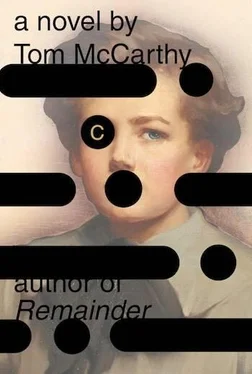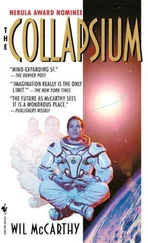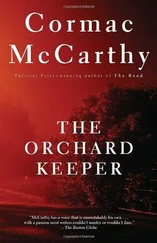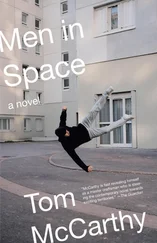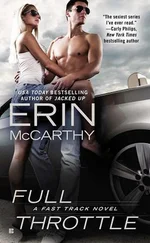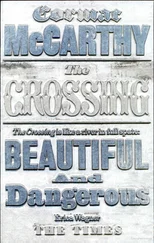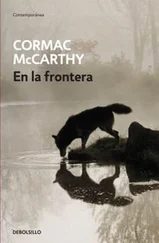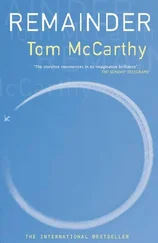“Oh, this is nothing,” she replies. “You want to see forensics? Come with me.”
She leads him through another doorway to a chamber to the side of hers. Pacorie’s in here, chemistry set fully unpacked, tubes, slides and beakers laid out all around him.
“L’Homme Pylon,” he says by way of greeting, “bienvenue.” He has a ledger too, in which he’s entering readings.
“He’s scraped, scratched or rubbed at virtually all the objects in my room,” Laura tells Serge. “The earth around them too; the walls, the floor, the lot.”
Pacorie, faced with this accusation, shrugs. “Is necessary.”
“And what have you found?” asks Serge.
“Gypsum, limestone, manganese, copper, calcite, the garnet, amethyst, red jasper-or, to state it in a mode more scientifique: Mn, SiO2, Cu, CaCO3, CaSO4. Surtout, the C: the C is everywhere.”
“The sea?” asks Serge.
“The letter: C.”
“What’s C?”
“Carbon: basic element of life.”
Laura tugs at his sleeve, in a way that’s familiar to him, though not from her. He follows her back to her chamber. At the back of this is a third opening, the only one he hasn’t been through yet.
“What’s behind there?” he asks.
“The part where all this stuff came from.”
“Can we go in there?” he asks.
“No,” she tells him. “Falkiner will be back soon.” It’s the first time she hasn’t used the word Professor when talking about him-as though, inside the tomb, and perhaps only here, her allegiance and complicity were gravitating away from him and towards Serge. She’s still holding his sleeve. Releasing it eventually, she says: “Come back in two hours, after lunch. He’ll be out again then.”
Serge returns to his tent, where he’s served some more stew in a pot that looks just like the one he’s using as a commode. He dozes after this, then wanders the site again, this time keenly aware of the plethora of buried objects it contains: he pictures coffins, boots, board-games and sardine tins lurking beneath him, particles shaken from the sand and plaster by each footstep trickling down across their surfaces. A rat scurries across the path in front of him, then disappears into a hole. Some of the tomb-openings have wasps’ nests growing, mould-like, on their splintered hatches. He has to detour round a hovering cluster of them on his way back to see Laura.
He finds her busily transcribing lines of text from the coffins into one of her ledgers. The lines run in strips, like flypaper or film, each frame a single picture: bird, scythe, foot, ankh, eye, a pair of hands…
“What does it say?” he asks, peering over her shoulder.
“They’re spells, for executing functions: opening the mouth so the deceased can eat, warding off crocodiles who want to devour his heart, things like that. All surfaces had these things written on them: amulets, masks, even bandages.”
On the page facing the one onto which she’s copying the strips are tables noting where these strips have come from: outer coffin, right… outer coffin, left… ditto, foot… head… inner coffin, right… inner coffin, left… ditto, foot… Below this, there’s a register of objects, with columns for grave, body, vases, coffin, beads. The entries in this read like doctors’ notes: cut-up body… copper borer in bone… XLIII, 2 rolls of bandage… linen over left leg, head on box… linen… lion scarab… jasper scarab… linen… linen… linen…
“You found bodies, then?” he asks.
“Mainly loose bones: these are everywhere, hundreds of them. Most of the intact bodies have been plundered or removed by expeditions. Royal and noble tombs get cleared out early on, due to the value of the objects in them. Middle-class ones are better: they tend to get passed over, and so end up less contaminated. I prefer them anyway.”
“Why?”
“They’re more interesting, more varied. From the Fourth Dynasty onwards, with the downsizing of the pharaohs’ tombs, pools of skilled craftsmen were available to decorate the private monuments of anyone who could afford it…”
She’s streaming information again-but the languor’s gone, and the excitement’s back. It excites Serge as well: not only what she’s saying but how she’s saying it, its strip-procession from her. He looks at her mouth. Its lips, coated by dust, are brown. Watching them move, he has the strange sensation that he’s closing in on something: not just her, or information, but what lies behind these… Laura senses his excitement: her lips pinken beneath their dust-coat and quicken their pace:
“The decorators-artists, scribes-had greater freedom, more leeway to mix and match old texts, thereby creating new ones. A greater choice of subject matter, too. Look at this stele over here.”
She leads him to a large, flat slab propped up against the wall. On it, a coloured vignette shows a man seated, in profile, at a table piled high with food. At his feet a dog lounges; musicians, acrobats and dancers entertain him; beneath him servants and craftsmen labour-bakers, perhaps, retrieving loaves from ovens, or perhaps carpenters sawing at waist-high beams, masons chipping and hammering at stone or butchers hacking away at meat; around them, further from the picture’s central hearth, men work the fields and fish the marshes. All these figures-entertainers, tradesmen, farmers, pet-are drawn, like the main character, in profile. They interact with one another, and seem to be exchanging words-but in a silent, gestural language only.
“It’s beautiful,” says Serge.
“The colours?”
“No: the flatness.”
“It’s the autobiography of one of the people buried in the complex,” she tells him. “His life, the characters in it, the world around them. Literature in its infancy. Here the scribe has put himself in, in the bottom corner. See that figure writing?”
“Yes,” Serge answers. “What did you call this?”
“A stele. We found it just over here.”
Pinching his sleeve again, she leads him through the doorway that she wouldn’t let him go through earlier and, crouching down beside a large, square gap in the new chamber’s wall through which a small, plastic-coated wire runs downwards into darkness, tells him:
“Stelae were placed one level up from the grave proper, as a kind of visual portal to it. They carried pictures of the deceased’s old life to the underworld, and conveyed back up from there ones of the new life he was living-which, of course, was a better, more refined version of the old one.”
“Two-way Crookes tubes,” Serge murmurs; “death around the world.”
“What?”
“Nothing. Where’s the grave itself, then?”
“Down here,” she says-and, like a rat, she’s disappearing through the hole. She lowers herself feet-first, taking hold of Serge’s arm to steady her descent. When she lets go, he climbs in too, and makes his way down a long, slanting shaft into whose lower surface footholds have been cut. The sides are moist, oily; the wire runs all the way down, unsecured. When Serge emerges from the bottom into a large room illuminated by electric lamps, he sees that it’s the wire that’s powering these; also, that his hands are blackened.
“Bitumen,” says Laura, holding her black hands up too. “I hope you brought a change of clothes.”
He looks around. The numbered markers that he saw in the photographs are still here, standing beside vacant spots. Others guard objects that haven’t yet been hoisted to the upper chamber: alabaster dishes, copper pans, fragments of broken pottery.
“Don’t move anything,” she tells him.
“What are those?” he asks, pointing to three ebony statuettes.
“They’re figures for the ka-the soul-to dwell in.”
“They look like the same person, done in different sizes.”
Читать дальше
